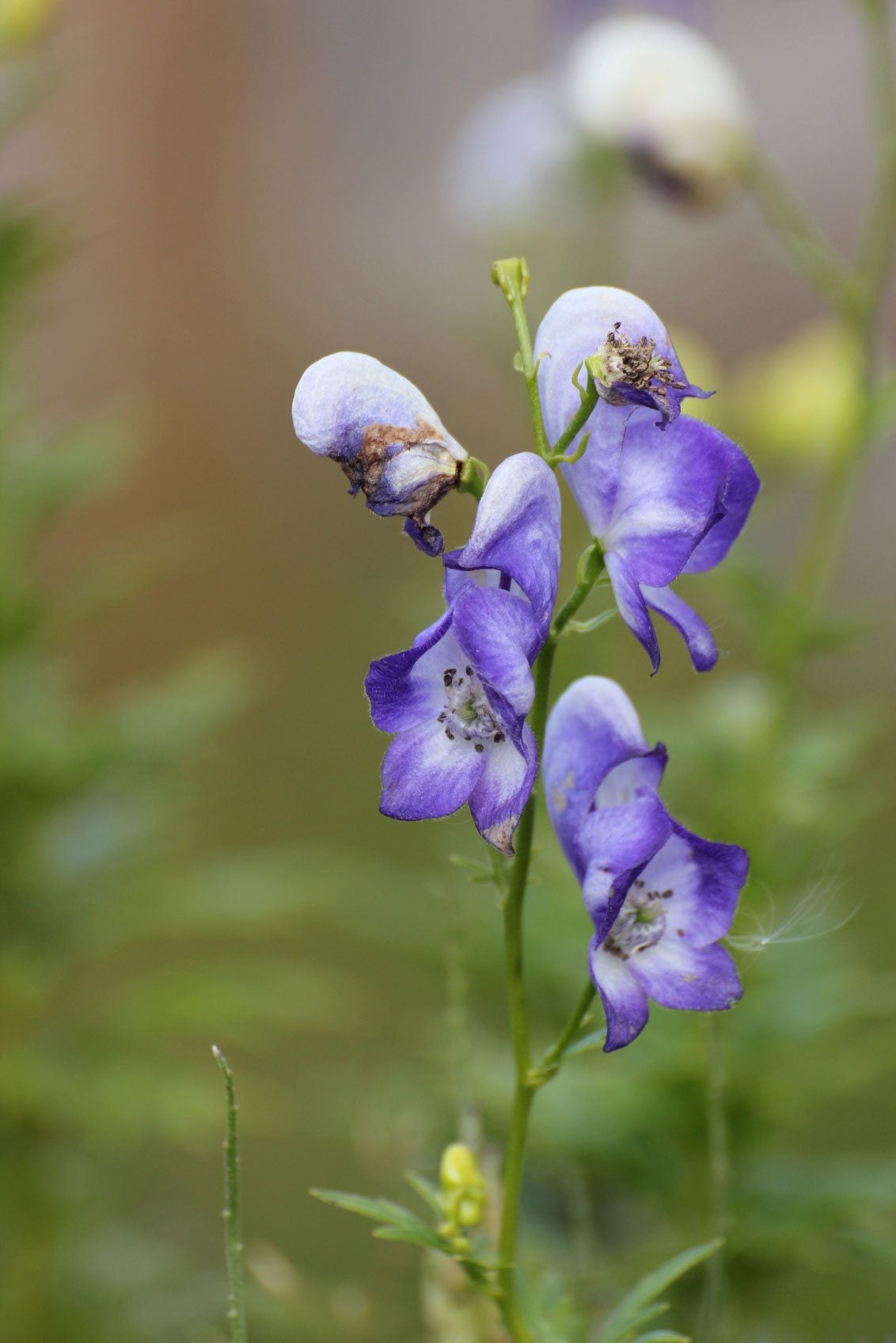Aconitum Monkshood: What Is The Best Way To Grow Monkshood In The Garden


The monkshood plant is an herbaceous wildflower that can be found growing in mountain meadows throughout the northern hemisphere. The plant gets its name from the shape of the posterior sepal of the flowers, which resembles the cowls worn by monks. Also known as wolfsbane and Aconitum, monkshood has become popular as a garden addition because of its purple/blue flowers and attractive foliage.
Aconitum Monkshood Info
Growing 2 to 4 feet (0.5-1 m.) tall and 1 to 2 feet (31-61 cm.) wide, perennial monkshood is best grown as a background plant. The leaves of the monkshood plant are palmate, meaning hand shaped, with lobed "fingers" that often have toothed edges and vary in color from light to dark green. In late summer or early fall, it sends up showy spires of purple/blue flowers. Species of Aconitum monkshood with white or yellow flowers are available, though not as common. Monkshead is not invasive and is both deer and rabbit resistant. However, monkshood, or wolfsbane, is moderately difficult to grow and once planted, doesn't like to be moved so the best way to grow monkshood is to choose your spot carefully. It sometimes takes a while for it to become established.
What Is the Best Way to Grow Monkshood
The best way to grow monkshood is to plant it in soil similar to what it grows in when wild: average and moist, but well drained. If the soil is too rich, the plants will become leggy and if it holds too much water, the fragile roots will drown. Perennial monkshood prefers sun, but can tolerate some shade and grows well in USDA plant hardiness zones 3 to 7, where the summer is not too hot. The hotter the summer, the more shade it needs, but beware-- the more shady the area, the more likely your monkshood plant will need staking. Try a spot with morning sun and afternoon shade for best results. If you must move your plants or propagate new ones, perennial monkshood can be divided, but the results are not always successful. If you must transplant, do it in early spring or late fall. Carefully tease the fragile roots apart and replant the crowns just below the soil surface. The best way to grow monkshood yourself is by seed. The seed should be just barely ripe to avoid a long dormancy and it's best to sow too many rather than too few because the germination rate is low unless conditions are perfect. Aconitum plants are readily available through catalogs and may be listed as either monkshood or wolfsbane and as its popularity increases, you'll see more of them at your local garden centers. Please, for the health of our environment and the beauty of nature, do not attempt to dig up a monkshood plant you have found growing wild.
A Warning About Aconitum Monkshood
All members of the genus Aconitum, monkshood included, are poisonous. In fact, wolfsbane, that other common name, came about from using the ground root of perennial monkshood in meaty bait to kill the once hated animals. It should never be grown within reach of children or pets and all parts of the plant are toxic, including the sap, so appreciate its beauty in the garden and not as a cut flower. To prevent absorption through the skin, wear gloves when you are gardening around monkshood. In the case of the monkshood plant, beauty comes with a price. Please be careful.
Gardening tips, videos, info and more delivered right to your inbox!
Sign up for the Gardening Know How newsletter today and receive a free copy of our e-book "How to Grow Delicious Tomatoes".

Jackie Rhoades began writing for Gardening Know How in 2010.
-
 Looking For Plants To Give You The Soft And Fuzzies? Try These 5 Fuzzy Leaf Plant Options
Looking For Plants To Give You The Soft And Fuzzies? Try These 5 Fuzzy Leaf Plant OptionsLovers of texture, drama, silver foliage and tactile plants will adore these special sensory garden additions. These fuzzy leaf plant options will leave you all aglow
By Susan Albert
-
 Get Ready For A Summer Of Hummers! Grow These Full Sun Hummingbird Plants and Flowers
Get Ready For A Summer Of Hummers! Grow These Full Sun Hummingbird Plants and FlowersIf you’re lucky enough to enjoy a sunny backyard, make sure you are maxing out on your pollinator opportunities and grow these full sun hummingbird plants and flowers
By Tonya Barnett